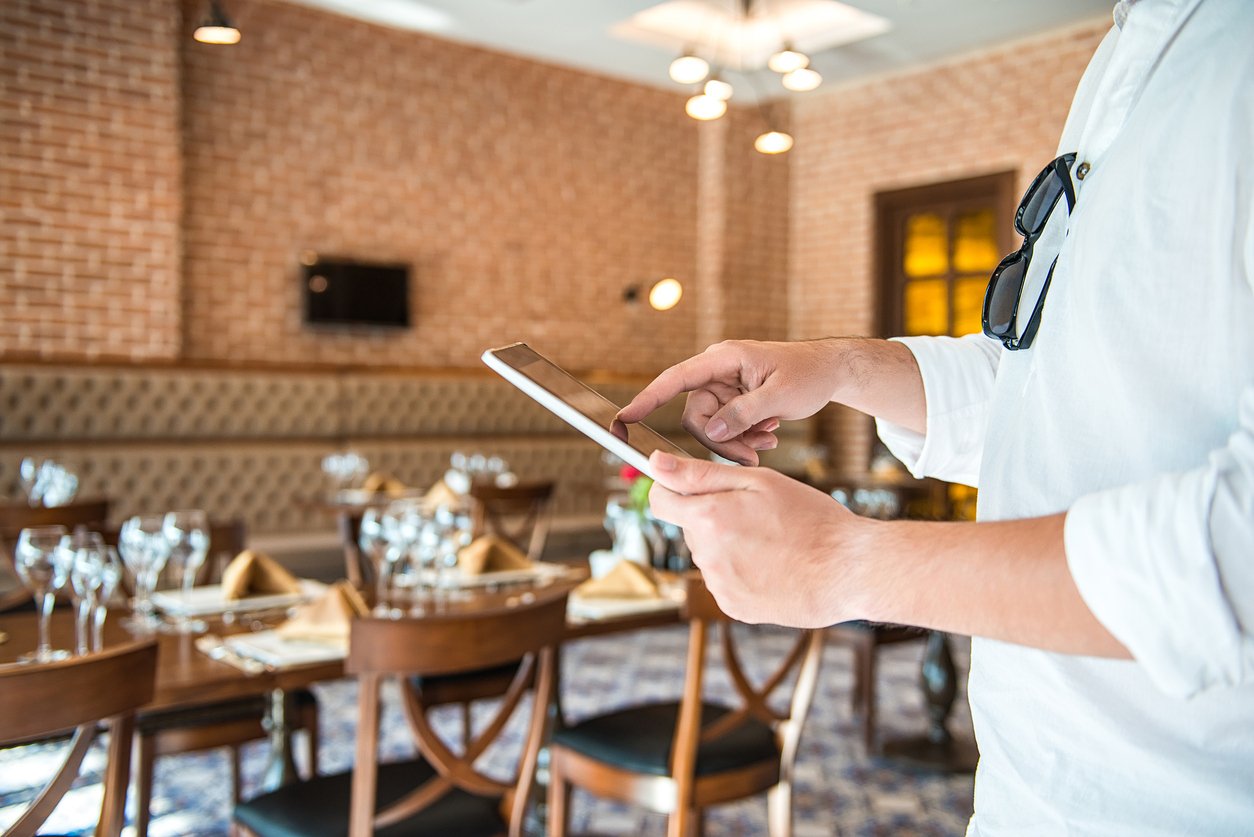How Web Schedulers Help Manage Queues For Municipal Service Centres

6 Feb 2023
Queueing isn’t fun. Although it’s not always a nerve-wracking experience, it can be stressful if you’re lining up for something official: applying for an ID, paying off a parking ticket, or simply figuring out your utility bills. There’s an inherent level of anxiety within these experiences that makes people want to avoid them, which will only make their problems worse.
Sure, people don’t go to municipal service centres for fun. But improving the queuing experience at a municipal location can still streamline service and help staff serve people far more efficiently. One of the most effective ways to do that is through a web scheduler.
What is a Web Scheduler?
An online scheduler refers to a scheduling tool connected to the internet. Generally speaking, these include a few basic functions like:
- Allowing customers to book and maintain their own appointments
- Tracking and syncing across calendars
- Client profiles and personalized messaging
- Branding customization
- Managing queues and appointments from multiple devices
While schedulers may come with additional bells and whistles, most online tools include these options.
Of course, online scheduling is only the latest step in a long history of booking appointments and queueing. There are four main types of schedulers.
- Traditional/Manual
- In-Person/Lobby Management
- Industry Specific
- Web Scheduler
Traditional/Manual

Booking an appointment the old-fashioned way means offline, off-site. In the past, people wrote letters or sent messengers to secure an appointment with doctors or other professionals. As technology advanced, most manual scheduling that remains today is done over the phone.
Obviously, the traditional way of scheduling is not in favor of modern-day practices. In a time when 44.69% of people in the world have smartphones, most have grown accustomed to using the internet for everything: shopping, managing bills, and booking appointments.
At the end of the day, modern life is busy. People have better things to do with their time than take the time to schedule something over the phone.
From a service centre perspective, phone booking may seem relatively simple. But the biggest issue with phone scheduling is how time-consuming it is. Your employees can end up spending hours on calls simply helping a customer book an appointment.
Is manual scheduling really worth their time when there are better alternatives? Probably not.
In-Person/Lobby Management
Believe it or not, first-come-first-served queueing wasn’t a concept until the 1800s, when people lined up to buy bread during the French Revolution. Limited supply and high demand came together and led to long lines out the door for certain products.
Modern-day grocery stores generally still have on-site queueing to check out. Of course, this isn’t limited to a necessity like food. Nowadays plenty of customers will line up to buy concert tickets or high fashion.
One of the reasons why so many have a negative association with government agencies is having to queue up in person for something that’s important but not desirable. Even if someone needs to apply for an ID at their local government office, they aren’t going to be as passionate to wait in line as they might be for their new favorite band’s newest live show.
While in-person queueing may seem like an obvious solution to keeping customers in order, it’s not the optimal solution from a customer service point of view. Impatient people generally make for more unruly customers for your customer-facing staff to deal with.
Businesses that operate with in-person queues generally integrate personnel-based lobby management for increased control over the situation. That means hiring attendants to manage the people in a waiting area. Their duties might include:
- Escorting waiters to the appropriate area
- Answering customer queries
- Managing queue flow from one location to another
Having agents on the floor managing queues may seem to improve customer experience by adding a human touch to their waiting experience. On the downside, however, human personnel are always limited in how much they can handle at a given moment. If the lobby area is packed, they may be overwhelmed.
Below is a quick comparison guide of how different types of scheduling compare to each other.
| Space-intensive | Time-consuming | Organization | |
| Traditional | Depends | Long, including planning | Difficult |
| In-Person Queueing | Yes | Long | Resource-intensive |
| Web Scheduling | No | Short to none | Simple, intuitive |
As you can see, an appointment scheduler removes stress from both customers and organizations.
Industry Specific
Booking systems vary from industry to industry. For example, while retail stores might work just fine with a combination of in-person queueing and online shopping, a gym might incorporate scheduling practices that plan for group bookings. Below are three examples of booking that serve people in different industries.
- Assign time slots. Giving people a list of availabilities and letting them choose is a great way to dole out work or make sure the timing works for both of you. Industries: Home improvement, nonprofits.
- One-on-one booking. For industries centered around private sessions between a practitioner and client, a single-person booking where they get to choose between your services and pay online may work best. Industries: Therapy, spas or salons, tutoring.
- Group scheduling. Online courses, fitness classes, or group tours are best suited to group scheduling, which allows a limited group of people to book an appointment with your organization at once. Industries: Museums, gyms, education.
This doesn’t cover every single type of scheduling that exists, but these are a few basic examples that should include a wide set of industries. Different systems will work for different types of businesses. A flexible online scheduling system can make each of these types of scheduling easier.
Common Problems with Traditional/Offline Schedulers

Offline scheduling is often the default solution for booking appointments for customers. Even so, it’s not necessarily the most effective way to schedule. Here are 4 common problems with traditional scheduling.
- Slow. Whether it’s calling in or just lining up, traditional customer management methods are time-consuming for both customers and employees.
- Customer dissatisfaction. People hate to wait. No matter how attentive your staff is, having to queue will result in at least one customer feeling underserved in some way.
- Difficult to cancel. Not being able to cancel their appointments will lead to no-shows for your service centre, which means lost money and productivity.
- Lack of communication. How can your customer reschedule or communicate feedback for an appointment? In traditional scheduling, they have to pick up the phone, which most people aren’t willing to spare the time for. Plus, you end up losing your connection with who you serve.
You need to account for the fact that in general, people in line are generally not willing to be there. They don’t want to wait in a queue for longer than 14 minutes when they’re waiting in person.
Moving your municipal centre scheduling online is a great way to manage queues and improve customer satisfaction. Plus, it’ll make your staff far more productive when they don’t have to wrangle people on-site.
Top 4 Reasons Why A Web Scheduler Will Help Manage Municipal Service Centre Queues
What are the benefits of using an appointment scheduler to manage your municipal centre’s services? Here are the top 4 reasons.
- Consistent communication
- Flexible scheduling and rescheduling
- Reporting and analytics
- Confidentiality
Reason 1: Consistent Communication
In a traditional queuing system, off-site communication can prove challenging. Visitors only talk to your staff once when scheduling the appointment. If they want to add more information to their case or appointment, they have to:
- Call back again
- Wait on hold for minutes/hours
- Get transferred to the right department
- Speak to a representative
With that in mind, is it any mystery that representatives are struggling to maintain communication with their contacts? 47% of customers will stop associating with an organization that offers them a subpar communication experience, which just means people will end up being more hesitant to call into municipal service centres when they have issues.
A municipal scheduler app can streamline your communication efforts, keeping you in touch with people no matter what stage they’re at. Customers will be able to book appointments online, fill out custom contact forms to fill out a more detailed consumer profile.
You can designate automated follow-ups, schedule return appointments, and reach out to them through email or text push notifications. It’s better and easier than traditional forms of booking. With the right scheduling tool, your employees will be able to keep everything in one spot and keep talking, offering visitors the assistance they need when dealing with their affairs.
Reason 2: Flexible Scheduling/Rescheduling
In an ideal world, nobody is planning to no-show their appointment. Accidents happen, though. Whether they fall sick, crash their bike, or lose the ID they need to get served at your location, would-be visitors are far more likely to no-show the appointment if it’s too difficult to reschedule or cancel.
Having to dash out an email or pick up the phone is almost impossible to ask for in emergency circumstances. When you have a flexible appointment scheduler, on the other hand, rescheduling or cancelling can be done within a few taps on your visitor’s phone. Within moments in a website portal or on a mobile app, your customers can make sure you know in advance if they’re not going to show up.
Flexible scheduling and rescheduling contribute to a better customer experience for the people you’re servicing. Instead of having to worry about rebooking appointments, they can do it quickly and continue with the rest of their day.
Your team also won’t have to worry about the time they’ve wasted scheduling a no-showed appointment. With an online scheduler, customers book and maintain their own appointments.
Here’s a chart helping compare how traditional and online scheduling break down side by side in terms of rebooking:
| Scheduling | Rescheduling | Other Circumstances (e.g. lateness, loss of property, etc.) | |
| Traditional Scheduling | Phone calls, back and forth | More phone calls, identity/appointment verification, might result in no-shows | Lack of communication leads to missed windows of service |
| Online Schedulers | One-click/tap scheduling through a website portal or app | One-click/tap rescheduling/cancellation through a website portal or app | Update or message the service centre through a web portal, app, or text |
Using reminders to push notifications will only help keep you top of mind for people who are planning their visits or appointments, resulting in a far lower incidence of no-shows. Even if people do need to cancel the appointment, they can simply tap on the notification to find a cancellation link.
With the right scheduler, everything is customizable, and you can make it easier than ever for your visitor to serve themselves.
Reason 3: Reporting and Analytics

When a team is operating in analog mode, there’s no accounting for analyzing your team’s performance. You can only rely on subjective reviews to give an idea of how a given member of your staff has been performing in customer encounters.
Schedulers have integrated reporting and analytics functionality. With this, you can track stats such as:
- Website bounce rate
- Waiting time
- No-shows
- Customer feedback
Without knowing how well you’re doing at the moment, it’s impossible for you to improve.
An online scheduler will assist you in tracking the information you need to know so you can serve visitors better and faster, speeding up queues and improving satisfaction rates all around.
Reason 4: Confidentiality
For a government agency, confidentiality is a top priority. Your visitors want to know that their appointments are being handled in secrecy, without leaking any of their personal information.
Phone calls may be the traditional way of scheduling appointments, but they don’t provide the same level of safety visitors want. 40% of all phone calls in the United States alone are scams.
It’s no wonder most people aren’t open to giving up their information over the phone. On the downside, this might make for a more difficult experience for your staff if they want to offer a personalized experience.
Thankfully, most scheduling tools offer built-in forms your visitors can fill out from the privacy of their homes. You can customize and have them fill out fields that can speed up the visit:
- Basic info (name, age)
- Purpose of visit
- Documentation
- ID or reference numbers
- Additional requirements or special details about their case
In a more secure scheduler app, your on-site data will be locked behind encryption and secured in the cloud, which makes it nearly impossible for hackers or scammers to access it. Not having to worry about their personal data being compromised means a more stress-free experience for your visitors the whole time.
Frequently Asked Questions
“How much does a web scheduler cost?”
An appointment scheduler can range anywhere from free to $7,000+/month. This will also largely depend on the size of your business since some tools charge more for scalability.
Important to keep in mind is that you’re paying for the quality of the software and how much functionality it can bring you. Spending a few bucks on a cheap but ineffective software is a waste, but if you purchase a more expensive software that does more for you and your employees, you’ll end up benefiting in the long run. In that scenario, the price is a worthy investment that will keep your visitors happy and your queues moving along smoothly.
“How do you set up a web scheduler?”
Setting up a scheduler app may seem intimidating, but it’s really only a few main steps:
- Research your new scheduling system. Find out what the system can do and what it can’t. Read up on reviews if you can and know what functions you want to prioritize the most.
- Account for physical/software setup. Do you need to set up kiosks? Tablets? How many devices are you downloading software to?
- Think through customer experience. Will your customer be able to schedule an appointment via text, website, social media? What’s the shortest route for them to find what they’re looking for?
- Educate your employees. Training your staff to understand how they can use a new scheduler will help them understand best practices. A good appointment scheduler will also have a strong customer resources section to help you understand how you can utilize their solution.
Walk through these steps carefully and you should be good to go with your new scheduling tool.
“What is the best web scheduler?”
We may be a little biased, but we like to think that Skiplino is the best scheduler and queue management system. It’s a cloud-based system that will help you manage customers, analyze performance, and optimize service efficiency over time.
It’s highly flexible and compatible across multiple platforms and devices, offering you full customization according to your specific needs. In short, it’s a perfect solution for a municipal service centre that has to deal with high traffic day in and day out.
Conclusion

Integrating an appointment scheduler into your municipal service centre is a surefire way to increase visitor approval ratings and find more time to serve more people who are looking for assistance. Serving the people in your district is all about finding an efficient solution to manage incoming visitors, and a scheduler app will do just that with zero additional effort required from your staff members.
Interested in trying out a great scheduler? Skiplino is offering a 7-day free trial: check it out here.
Latest



Similar Reads


All Rights Reserved @2025 Skiplino Technologies WLL.




